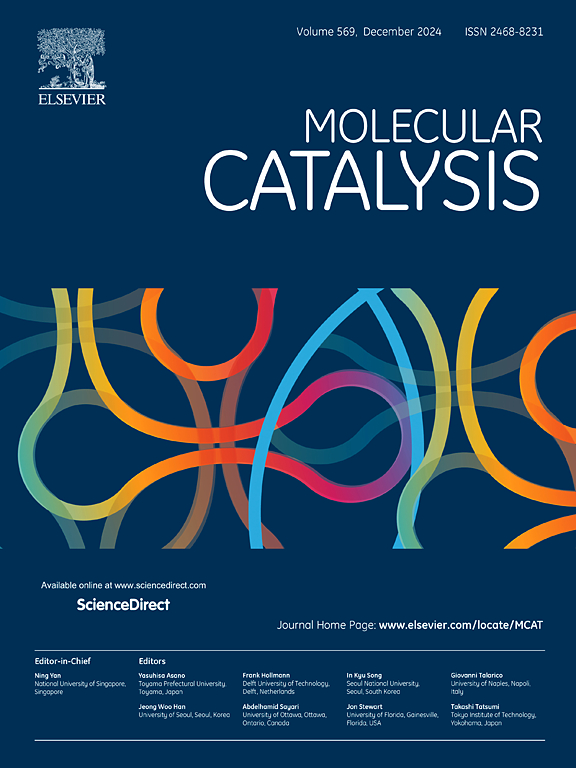Unification of Ru and carbon support in catalytic aqueous 1,6-hexanediol amination
IF 3.9
2区 化学
Q2 CHEMISTRY, PHYSICAL
引用次数: 0
Abstract
The aqueous-phase reductive amination of 1,6-hexanediol (HDO) to amines is reported in the presence of Ru supported over various carbon materials with efficient product selectivity even under mild conditions (463 K, 25 bar H2). Activated carbon with an optimal balance of amorphous and graphitic configurations proved to be an outstanding support for achieving the highest selectivity towards total amines. Furthermore, adding Ba(OH)2 in the Ru supported on different carbon materials notably improved the conversion of HDO and boosted the selectivity towards amines by around 1.3 times. This enhancement led to impressive yields, with hexamethylenediamine (HMDA) reaching up to 29%, azepane at 24%, and 6-amino-1-hexanol (AH) at 15% when using Ru-supported on activated carbon. A detailed examination and control experiments demonstrated the significance of the synergistic relationship between graphitic and amorphous sites within carbon materials, resulting in enhanced selectivity towards amination. Increasing the alkyl chain length of mono alcohols consistently produced higher yields with longer carbon chains, thus suggesting the crucial role of alkyl chain adsorption on amorphous carbon material in the HDO amination process, with Ru acting as the pivotal active site.

求助全文
约1分钟内获得全文
求助全文
来源期刊

Molecular Catalysis
Chemical Engineering-Process Chemistry and Technology
CiteScore
6.90
自引率
10.90%
发文量
700
审稿时长
40 days
期刊介绍:
Molecular Catalysis publishes full papers that are original, rigorous, and scholarly contributions examining the molecular and atomic aspects of catalytic activation and reaction mechanisms. The fields covered are:
Heterogeneous catalysis including immobilized molecular catalysts
Homogeneous catalysis including organocatalysis, organometallic catalysis and biocatalysis
Photo- and electrochemistry
Theoretical aspects of catalysis analyzed by computational methods
 求助内容:
求助内容: 应助结果提醒方式:
应助结果提醒方式:


